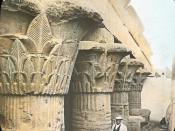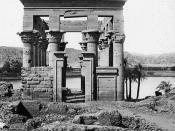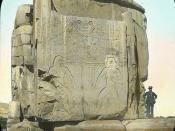The contemporary art of Arab women reveals a growing self-awareness rooted in admiration, revulsion and resistance-- signifying a recognition of the complexities of their history and of the wider world they inhabit. Their art articulates an active resistance to the domination and the creation of a new culture, sometimes achieved by exploring and reintegrating layers of history. Using art, Arab women are seizing the moment to make an imprint upon the forces of change in their lives. Their art confronts and alters the macro-structures that influence the language, formation of families, and modes of production and consumption in the Middle East-macro-structures that stimulate aesthetic forms celebrating life and mourning destruction.
Exploring Ancient Roots
Artistic expression has been part of the human condition at all times and in all places. As with language, art is a species-centered activity. In the conventions of Euroamerican culture, the arts have become disassociated from the stream of life as artistic creation has increasingly become the function of the specialist.
In our definition of art we differentiate "pure" from "folk" art, "fine arts" from "crafts." Such distinctions impede the understanding of arts as a basic expression of experience.
Art of the Arab world permeates all ways of life in every country. The living tradition of folk art is seen in the embroidered clothing of brightly draped village women, the Ramadan festival of lights, rug making, pottery decorations, personal adornment and even the designs on food prepared to celebrate religious rituals and events. Elements of the theater arts are evident in marriage ceremonials, funeral practices and performances of traditional music.
The cultures of North Africa exhibit the greatest continuity in the use of artistic forms. The petroglyphs dating from more than 4000 years BC in the Fazzan Valley of Libya and the Tassili petroglyphs in Southern Algeria...


